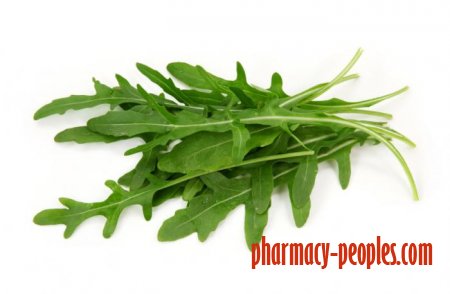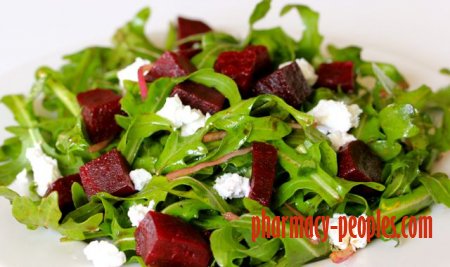The health benefits of arugula
Arugula, also known as rocket and rucola, is a lesser known cruciferous vegetable that provides many of the same benefits as other vegetables of the same family — broccoli, kale, and Brussels sprouts.
Arugula leaves are tender and bite-sized with a tangy flavor. Along with other leafy greens, arugula contains very high nitrate levels (more than 250 milligrams per 100 grams).
High intakes of dietary nitrate have been shown to lower blood pressure, reduce the amount of oxygen needed during exercise, and enhance athletic performance.
This article provides a nutritional breakdown of arugula and an in-depth look at its possible health benefits, how to incorporate more arugula into your diet, and any potential health risks associated with consuming arugula.
Many studies suggest that increasing consumption of plant foods like arugula decreases the risk of obesity, diabetes, heart disease, and overall mortality while promoting a healthy complexion, increased energy, and overall lower weight.
1) Cancer
Arugula provides many of the same benefits as broccoli, kale, and Brussels sprouts.
For the past 30 years, eating a high amount of cruciferous vegetables has been associated with a lower risk of cancer; particularly lung and colon cancer.
Recently, studies have suggested that the sulfur-containing compounds (sulforaphane) that gives cruciferous vegetables their bitter bite are also what give them their cancer-fighting power.
Sulforaphane is now being studied for its ability to delay or impede cancer with promising early results associated with melanoma, esophageal, prostate, and pancreatic cancers.
Researchers have found that sulforaphane can inhibit the enzyme histone deacetylase (HDAC), known to be involved in the progression of cancer cells. The ability to stop HDAC enzymes could make sulforaphane-containing foods a potentially powerful part of cancer treatment in the future.
Easily recognized cruciferous vegetables include broccoli, cauliflower, Brussels sprouts, kale, turnips, and cabbage as well as the lesser-known arugula, Broccolini, daikon, kohlrabi, and watercress.
Arugula also contains chlorophyll, which has been shown to be effective at blocking the carcinogenic effects of heterocyclic amines generated when grilling foods at a high temperature.
2) Osteoporosis prevention
Low intake of vitamin K has been associated with a higher risk of bone fracture. Adequate vitamin K consumption improves bone health by acting as a modifier of bone matrix proteins, improving calcium absorption and reducing urinary excretion of calcium.
Arugula also contributes to your daily need for calcium, providing 64 milligrams in 2 cups.
3) Diabetes
Leafy greens contain an antioxidant known as alpha-lipoic acid that has been shown to lower glucose levels, increase insulin sensitivity, and prevent oxidative stress-induced changes in patients with diabetes.
Studies on alpha-lipoic acid have also shown decreases in peripheral and autonomic neuropathy (nerve damage) in diabetics.
However, most studies have used intravenous alpha-lipoic acid, so there is uncertainty whether consuming it would elicit the same benefits.
4) Exercise and athletic performance
Dietary nitrate supplementation in the form of beetroot juice has been shown to improve muscle oxygenation during exercise; this suggests that increased dietary nitrate intake might enhance exercise tolerance during long-term endurance exercise.
Some researchers believe that it could improve quality of life for those with cardiovascular, respiratory, or metabolic diseases who find the activities of daily life are physically difficult because of lack of oxygenation. Beetroot juice improved performance by 2.8 percent (11 seconds) in a 4-kilometer bicycle time trial and by 2.7 percent (45 seconds) in a 16.1-kilometer time trial.
Beetroot is just one of many vegetables that are high in nitrate. Leafy green vegetables like arugula are among the top sources.
[b]Nutritional profile of arugula[/b]
According to the USDA National Nutrient Database, two cups of arugula (about 40 grams) contains approximately 10 calories.
Arugula also contains:
- 1 gram of protein
- 0.3 grams of fat
Consuming 2 cups of arugula will provide:
- 20 percent of vitamin A
- over 50 percent of vitamin K
- 8 percent of vitamin C, folate, and calcium needs for the day
Arugula ranks among the top 20 foods in regards to ANDI score (Aggregate Nutrient Density Index). The ANDI score measures vitamin, mineral, and phytonutrient content in relation to caloric content.
To earn a high ANDI score, a food must provide a high amount of nutrients for a small amount of calories.
How to incorporate more arugula into your diet
Arugula can be added to fresh salads, pastas, casseroles, and sauces just like other leafy greens.
Arugula is most commonly consumed fresh in salads but can also be incorporated into pastas, casseroles, and sauces just like other leafy greens.
It tends to sauté faster than its tougher cousins kale and collard greens because of its tenderness.
It lends more flavor to a dish than spinach or Swiss chard.
Arugula is easy to grow and perfect for a windowsill garden - it requires only 3 hours of sunlight per day.
Due to its peppery flavor, arugula is often mixed with other milder greens such as watercress and romaine. In Italy, it is common to top pizza with arugula after baking. Arugula should be stored in the refrigerator and used within a few days of purchase.
Here are some tips to try to incorporate more arugula into your daily routine:
- Add a handful of fresh arugula to an omelet or scramble.
- Throw a handful of arugula and blend into a fresh juice or smoothie.
- Sauté arugula in a small amount of extra-virgin olive oil and season with freshly ground black pepper and freshly grated Parmesan cheese. Eat as a side dish or top your baked potato.
- Add arugula to your wrap, sandwich, or flatbread.
Potential health risks of consuming arugula
It is the total diet or overall eating pattern that is most important in disease prevention and achieving good health. It is better to eat a diet with variety than to concentrate on individual foods as the key to good health.
If you are taking blood-thinners such as Coumadin (warfarin), it is important that you do not suddenly begin to eat more or fewer foods containing vitamin K, which plays a large role in blood clotting.
If improperly stored, nitrate-containing vegetable juice may accumulate bacteria that convert nitrate to nitrite and contaminate the juice. High levels of nitrite can be potentially harmful if consumed.
Consult a doctor before starting a high-nitrate diet if you have cardiovascular disease or associated risk factors. A high-nitrate diet may interact with certain medications such as organic nitrate (nitroglycerine) or nitrite drugs used for angina, sildenafil citrate, tadalafil, and vardenafil.


